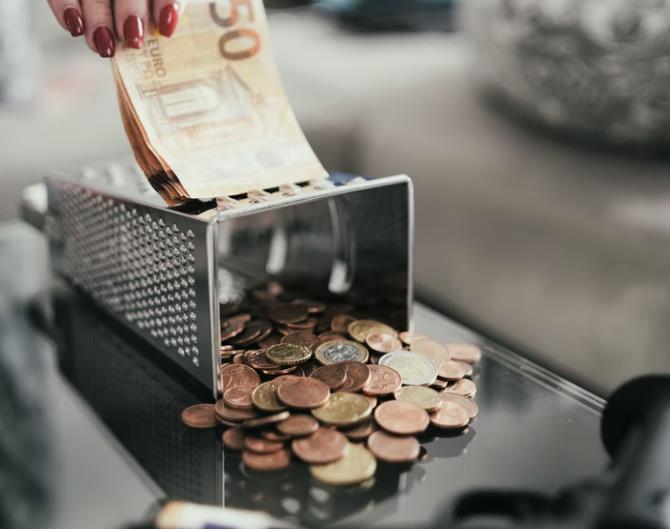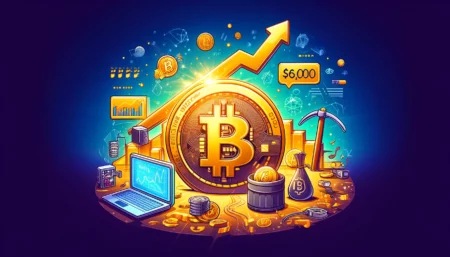In the first month of 2022, the transaction volume of non-fungible tokens NFTs performed well under the overall sluggish environment of the crypto asset market. Data from The Block Data Dashboard shows that in January of this year alone, the NFT transaction volume reached $6.13 billion. Data from The Block Research shows that for the whole of last year, the transaction volume of NFTs exceeded $13 billion. Trading volumes in January were nearly half of what they were for all of last year.
NFT is mainly supported by digital artwork and collectibles generated on the blockchain. There are also many legal risks in the increasingly large market. Multiple reports point out that there are risks such as fraud and money laundering in the NFT market. Washing transactions prohibited by the financial market Behaviour is also widespread.
In February of this year, the “Research on Promoting Money Laundering and Terrorist Financing through Art Transactions” released by the U.S. Treasury Department pointed out that there are potential risks of illegal money laundering or terrorist financing activities in the NFT field. During the same period, Chainalysis, a blockchain data agency serving multinational regulators and law enforcement agencies, recently reported that they had detected laundering and money laundering in the emerging asset class of NFTs.
Following cryptocurrencies such as Bitcoin and open financial DeFi, NFT may become another area of encrypted assets that regulators pay attention to.
Millions of dollars of illicit funds entered the NFT market
In February of this year, the U.S. Department of the Treasury released the “Research on Facilitating Money Laundering and Terrorist Financing through Art Transactions”, which classified NFT transactions as an “emerging online art market” and argued that this market “may be bring new risks.”
The research report defines NFTs as digital units or tokens on the underlying blockchain that represent ownership of images, videos, audio files, and other forms of media, or ownership of physical/digital property, “They have no endorsement tool and will uniquely Ownership of digital assets (such as a piece of high-value digital artwork) is encoded and managed (such as minted, held, transferred, and destroyed) through smart contracts and digital wallets.”
This report affirms the opportunities that distributed ledger technology and NFT technology bring to the creative media and art markets, but also assesses that such technological innovations bring potential money laundering risks, “criminals may use illicit funds to buy NFTs, and transact with themselves, create a record of the sale on the blockchain, and the NFTs can then be sold to unwitting individuals who will compensate the criminals with clean funds that are not related to the crime.”
Although on-chain transactions of NFTs will incur transaction fees, the parties to the NFT-type artwork transaction do not need to actually move the artwork or pay for transportation services-related costs, such as insurance, transportation costs or customs duties, digital artworks can be transferred over the Internet, Without having to worry about geographic distances and cross-border borders, “this makes digital artworks vulnerable to those seeking money laundering, since the transfer of value does not invite investigation by financial regulators or those managing physical shipments.”
If the report of the U.S. Treasury Department is only an estimate of the risk of NFT money laundering, the latest report of the blockchain data analysis service Chainalysis provides evidence monitored on the chain. The agency has a dedicated database of illegal addresses on the chain and has long served regulatory and law enforcement agencies in countries such as the United States.
The value of illicit funds received by the NFT platform
“Money laundering activities are small, but they are visible in NFTs.” Chainalysis gave the value data of illegal funds received by NFT platforms during Q2-2021 Q4, “The value sent to the NFT market through illegal addresses is the third in 2021. The quarter saw a substantial increase, surpassing the $1 million worth of cryptocurrencies, which grew again in the fourth quarter, peaking at nearly $1.4 million.”
The analyst firm pointed out that in the third and fourth quarters of 2021, the vast majority of illicit crypto assets involving NFTs came from scam-related addresses that purchased NFTs in cryptocurrencies, in addition to a large amount of stolen funds being stolen. Sent to the NFT marketplace, where several different types of cybercriminal addresses interact with the NFT marketplace, including malware operators, scammers, and Chatex, a cryptocurrency trader sanctioned by the U.S. Department of the Treasury’s Office of Foreign Assets Control.
NFT money laundering participants analyzed by Chainalysis
“The illicit activity attached to NFTs is a drop in the bucket compared to the $8.6 billion worth of cryptocurrency-based money laundering we tracked throughout 2021. However, money laundering, especially transfers from sanctioned cryptocurrency businesses, is a drop in the bucket. , posing a huge risk to building trust in the NFT market.” Chainalysis reminded and suggested that such illegal behavior should be more closely monitored by the market, regulators and law enforcement.
NFT wash trading in regulatory ambiguity
In addition to money laundering risks, Chainalysis also monitors wash trading practices that exist in the NFT market. Wash trading is a method of market manipulation, which mainly refers to the simultaneous sale and purchase of the same financial instrument by investors in order to create misleading conditions in the market.
Chainalysis explained that, historically, wash trading has been a way for cryptocurrency exchanges to try to make trading volumes appear larger than they actually are. The way NFT wash trades work is that a seller “sells” an NFT to a new wallet controlled by the original owner, making the NFT appear more valuable than it actually is. “In general, NFT wash trading can create an unfair market for buyers, and its existence can undermine trust in the NFT ecosystem and inhibit future growth.”
The agency tracks washes by analyzing NFT sales to self-funded addresses, and sellers of some NFT products have conducted hundreds of wash trades.
Chainalysis tracked one of the most prolific NFT wash dealers, “who has made 830 sales to addresses they self-funded.” By buying and selling on their own, the wash trader pushed up the price of NFTs. But it has so far not profited from wash trades, which have to cost gas fees for such on-chain wash trades.
Profitability of wash traders according to Chainalysis
According to the analysis data, the agency confirmed that 262 address users are habitual NFT wash traders, of which 152 did not make a profit, while the other 110 made a profit of nearly $8.9 million through wash trading.
“NFT wash trading exists in a murky legal area.” Chainalysis noted that while wash trading is prohibited in traditional securities and futures markets, wash trading involving NFTs has not been the subject of enforcement actions. However, this could change as regulators shift their focus and apply existing anti-fraud agencies to the new NFT marketplace.
The laundering transaction of NFTs has not been explicitly banned by the regulatory authorities, but the money laundering risks brought by repeated transactions have been noted.
The U.S. Department of the Treasury’s “Research on Promoting Money Laundering and Terrorist Financing through Art Transactions” mentions that NFT-type digital art can be incentivized to “shape a market that repeatedly trades works in a short period of time.” “While this ensures that the artist’s work is compensated after the first sale, this practice may introduce a money laundering loophole, as the motivation for the transaction may be higher than the motivation for verifying the buyer of the work, and may even create a situation where if Transactions are carried out in a continuous and rapid manner, and due diligence is impossible.”
The research report also pointed out that traditional industry players, such as art auction houses or galleries, are likely to be unable to implement effective means of customer identification and verification because they do not understand distributed ledger technology.
This U.S. Treasury Department study assesses that, depending on the nature and characteristics of NFTs and related platforms, the Financial Action Task Force (FATF) may consider these platforms as virtual asset service providers (VASPs) and may be subject to affiliation It is regulated by the Financial Crimes Enforcement Agency (FinCEN) of the Treasury Department.






